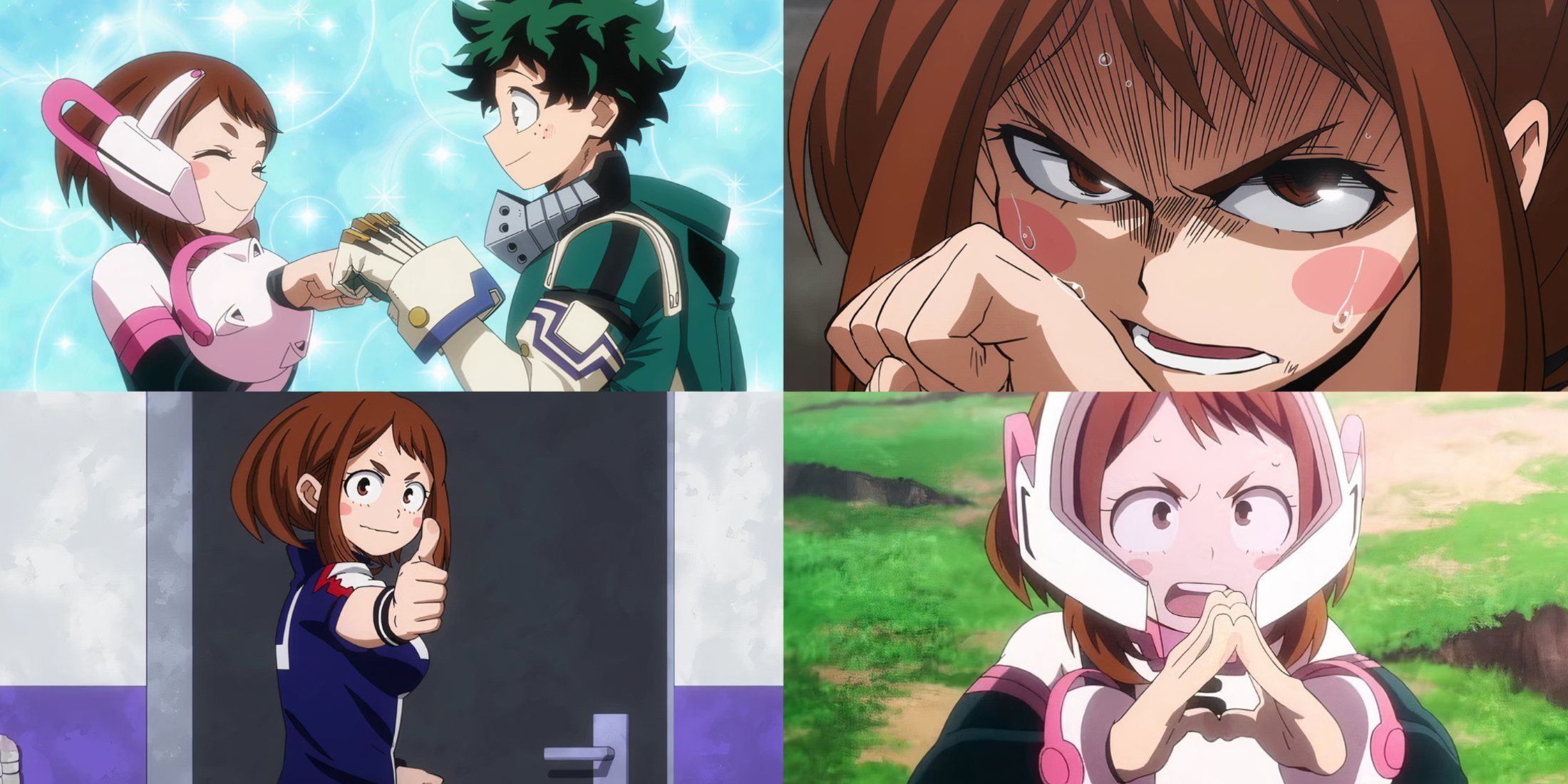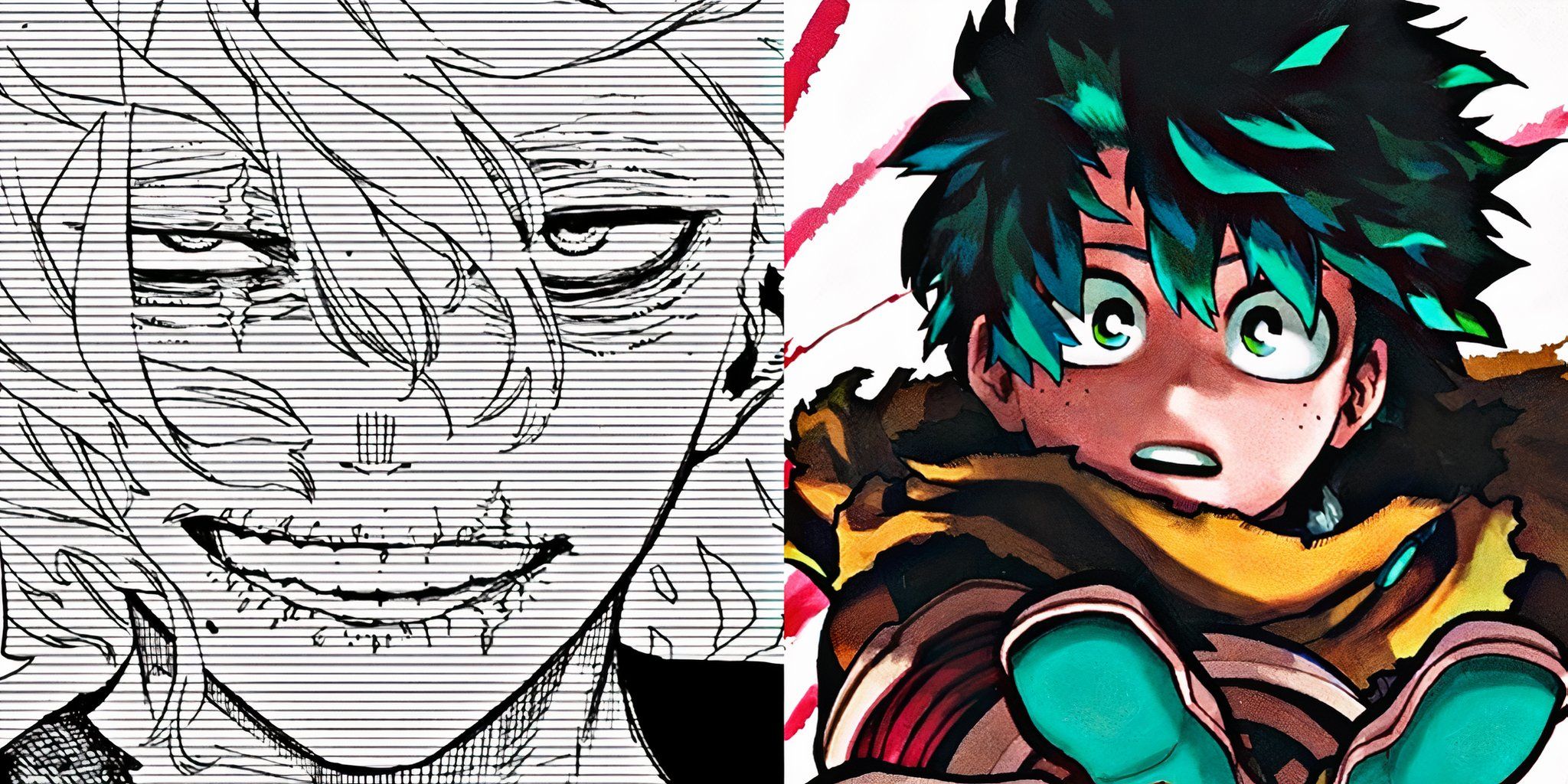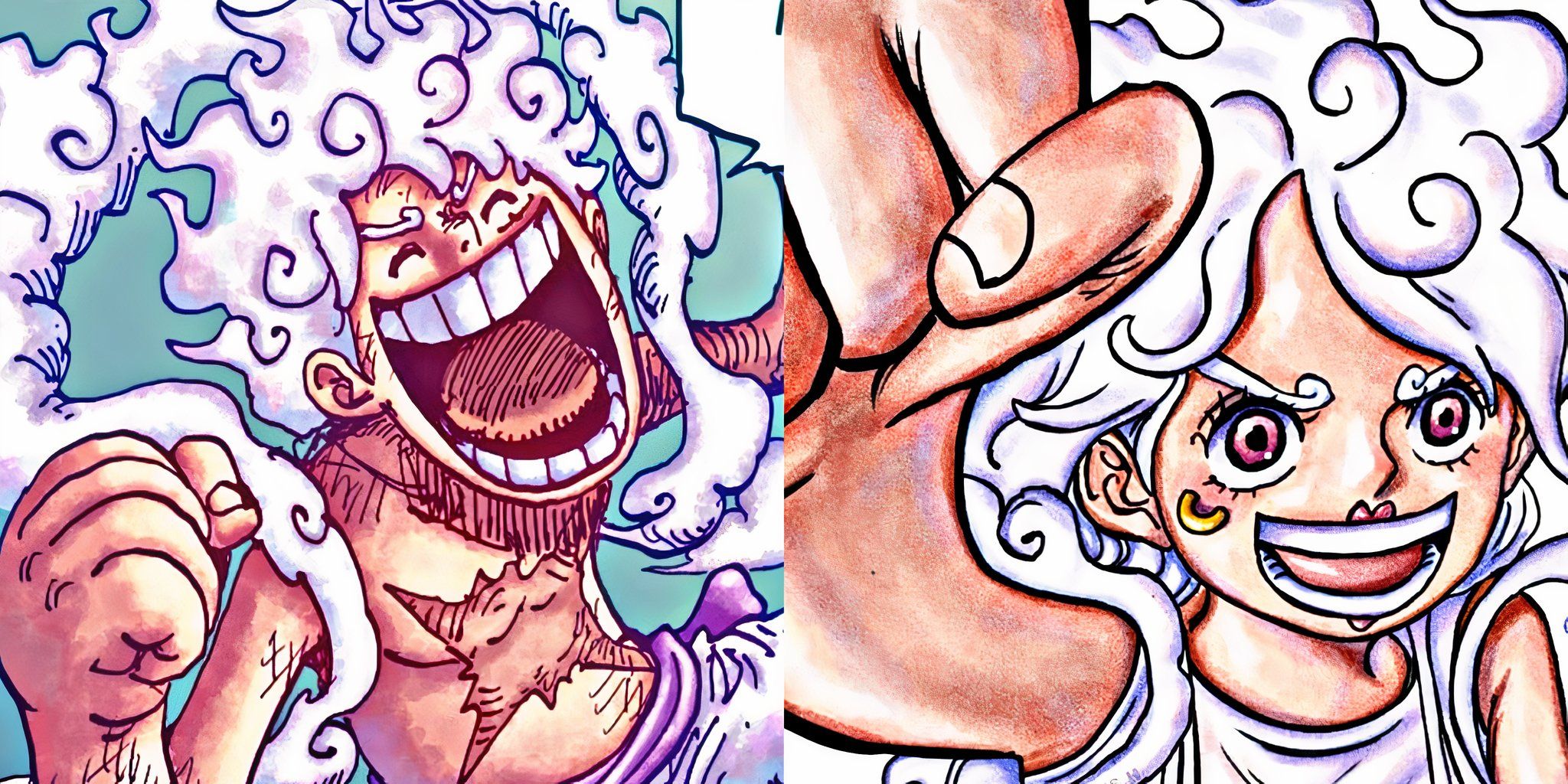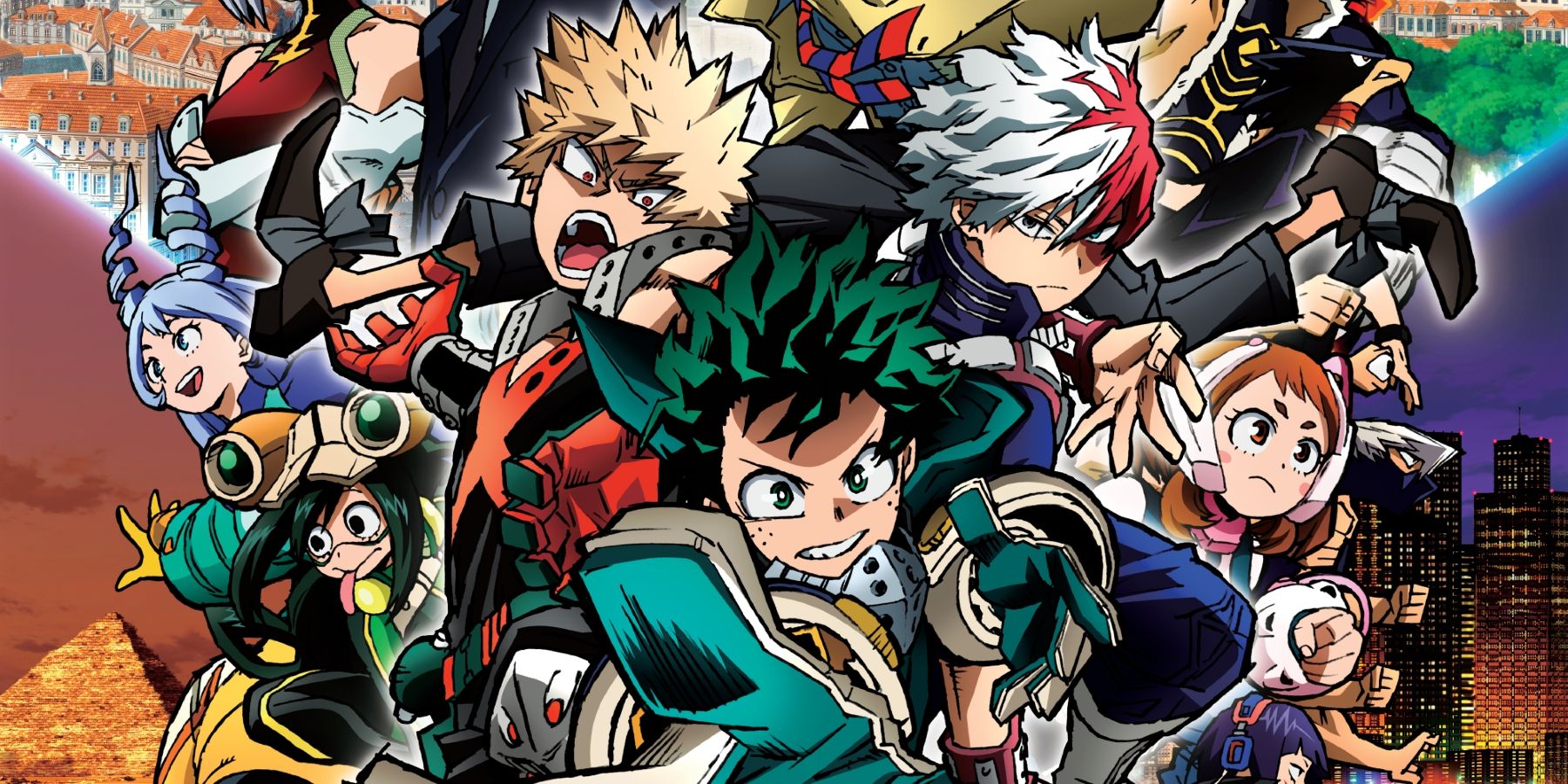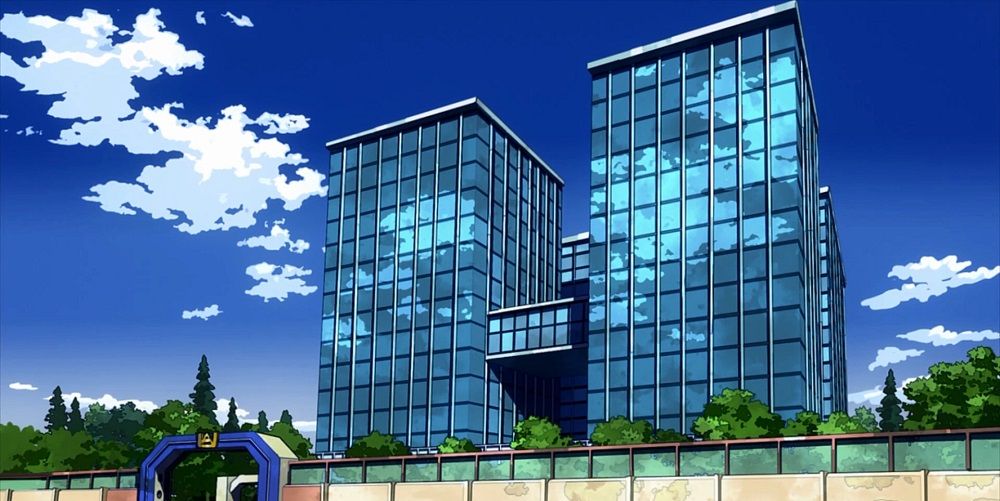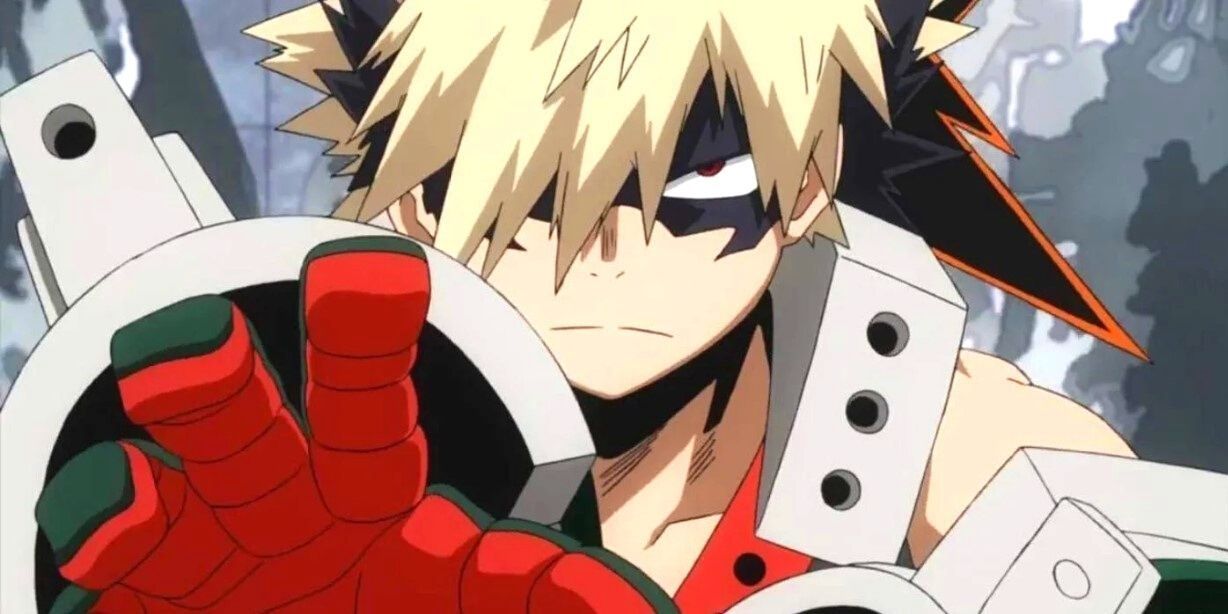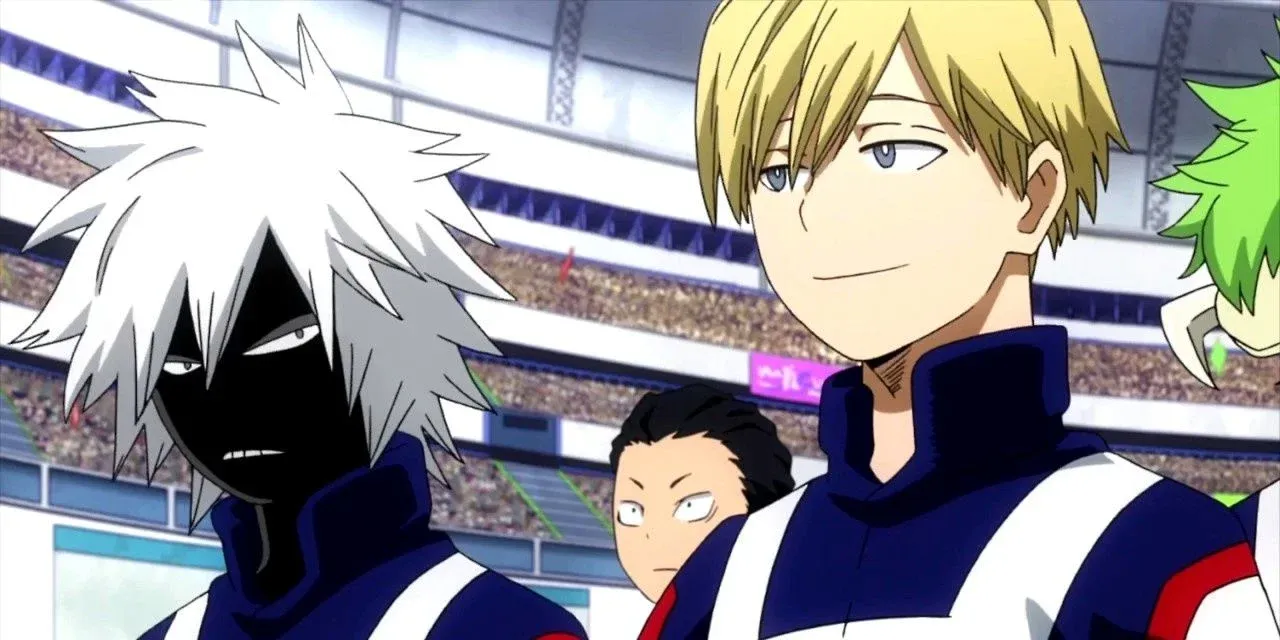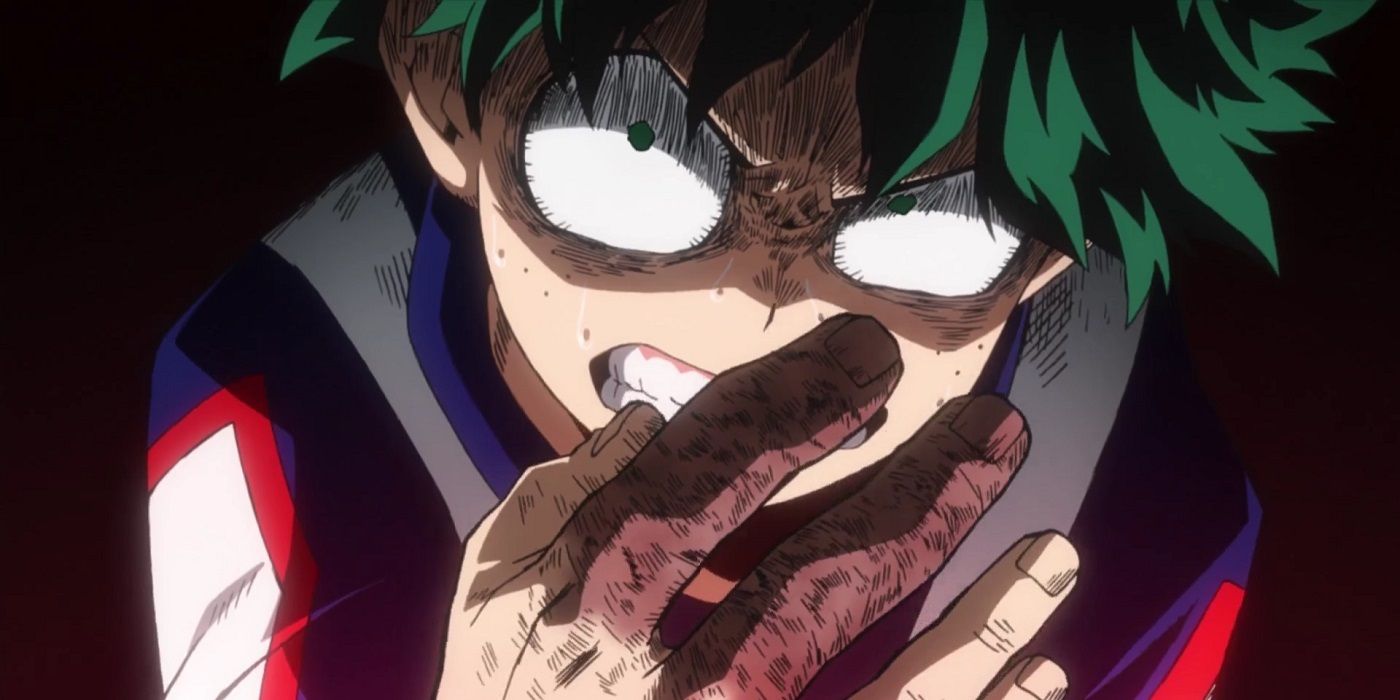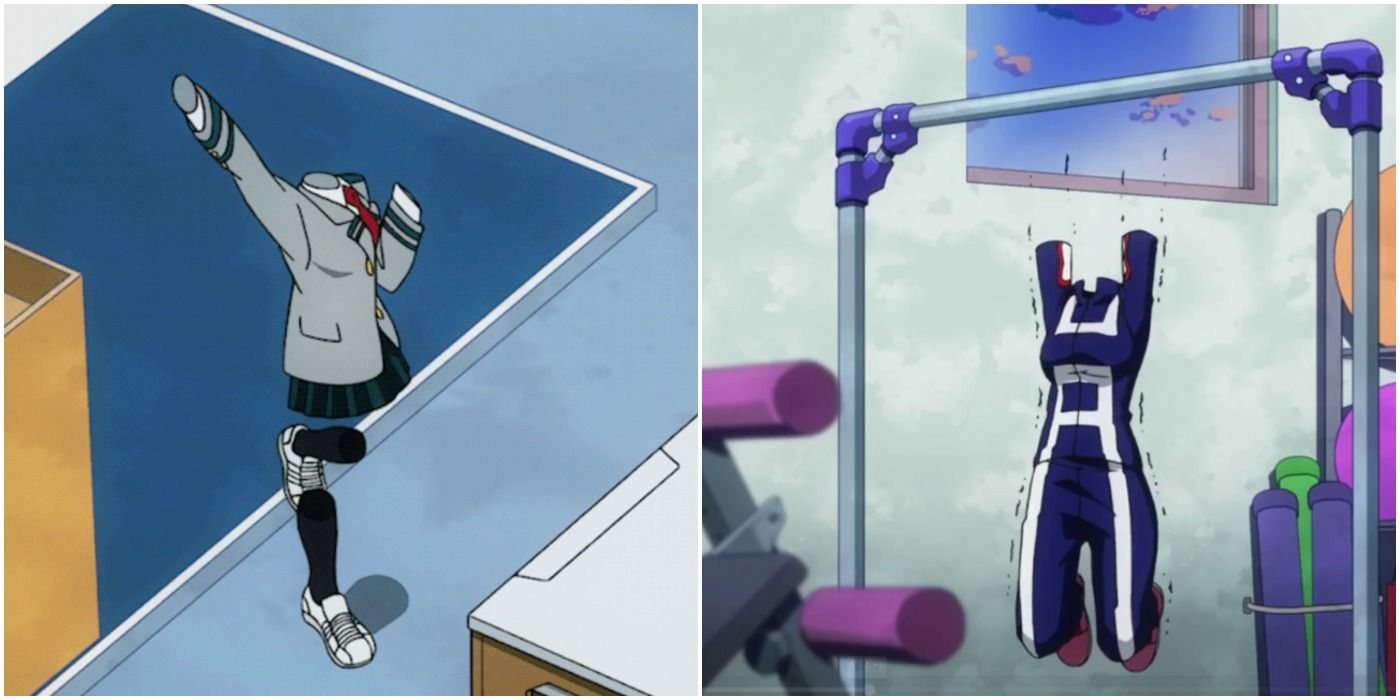From Reed Richards to J. Jonah Jameson, assonance and alliteration are incredibly common trends for the names of comic book characters. This is particularly true of the Marvel Universe; however, My Hero Academia, in its comics-inspired approach to its universe, makes use of interesting puns to give life to the world and characters.
My Hero Academia is rich in interesting to downright hilarious puns, but what are some of the series' best puns? Here's a list of 5 of the best My Hero Academia name puns.
U.A. High
The name of the institution that trains aspiring heroes is a throwaway at first glance; however, those who speak Japanese may have picked up on the deliberate attempt to make the pun less obvious. If one considered the Japanese pronunciation of the U.A. part, it would be something like "yuu-ei", which can mean "brave" in some contexts. However, if one were to reverse the letters, it would be "A.U. High". When considering the Japanese pronunciation of the letters in that order, you get "ei-yuu", which is literally the Japanese word for "hero".
Katsuki Bakugō (Hero Name: Great Explosion Murder God Dynamight | Quirk: Explosion)
The series deuteragonist, Bakugō was blessed with an immensely powerful Quirk from a young age and has honed it into a weapon of mass destruction. The family name, Bakugō, is written in Japanese "爆豪", and it literally translates to "bomber". The first character also features in the Japanese words denoting "explosion" (爆発 – "bakuhatsu") and "bomb" (爆弾 – "bakudan"), so the explosive nature of the character's Quirk and personality is a heavy motif in his name. The given name Katsuki, written "勝己" is written with the characters for "victory" and "the self", which helps better understand Bakugō's self-assuredness and desire to be the very best hero.
Shihai Kuroiro (Hero Name: Vantablack | Quirk: Black)
Introduced in season 5 of My Hero Academia, Shihai Kuroiro is one of the heroes from U.A. High Class 1-B. His Quirk is one that is aptly named given the way that it has colored his skin jet-black. His personality lends itself to his ability, and he is known as the Scheming Hero due to his slyness. His ability, Black, enables him to merge his body with anything that is dark in color, including shadows. He and Fumikage Tokoyami (Hero Name: Tsukuyomi | Quirk: Dark Shadow) are kindred spirits in a sense, as they are both denizens of darkness. In fact, during the training arc of the fifth season of My Hero Academia, Shihai briefly took control of Tokoyami's sentient Dark Shadow.
In terms of nomenclature, Shihai Kuroiro's entire name is a reference to his Quirk and abilities. The family name Kuroiro, written in Japanese "黒色”, directly translates to "black color", which is inspired by the character's jet-black appearance (or possibly, vice-versa), while the given name Shihai is written "支配", meaning "to control" or "to dominate" something. This is obviously a reference to the character's ability to merge with darkness, and all together, "Shihai Kuroiro" can be thought to mean "control of darkness", which is a fairly ominous ability.
Izuku "Deku" Midoriya (Hero Name: Deku | Quirk: One For All)
The family name Midoriya, written "緑谷", features the Kanji for "Midori", which means "green", and "tani", which means valley. Due to the fact that Kanji (literally "Chinese characters") have Japanese readings (kun-yomi) and traditional Chinese readings (on-yomi) in Japanese, the pronunciation of Kanji changes depending on the context; whether they're invoked on their own or together as part of a different word affects how they will be read. This is also the reason why Izuku has his hero name, as it is a deliberate misreading of the Kanji in his given name, and also refers to a traditional Japanese wooden doll. The name of this doll also came to be used as an insult, meaning a useless person, possibly in reference to the fact that deku dolls did not have any arms or legs. The nickname Deku can also be seen as the invocation of the phrase "出来損ない” – pronounced "deki-soko-nai" meaning "failure", or more closely, "good-for-nothing", which makes sense considering Deku's Quirklessness in the beginning of the series which was the main basis of the bullying he experienced throughout school.
The series protagonist, Izuku's given name is written in Japanese "出久". The characters used are generally seen in common words like ”出る” – "deru" (exit) and ”久々” – "hisabisa" (or more commonly, "hisashi-buri", which is something akin to "it has been a long time"). However, these are words based on the Japanese readings of these characters. This second Kanji on its own can also be read as "Hisashi", which also happens to be Deku's dad's name and a possible reference to his long absence. Izuku's given name supposedly hints at an individual who emerges after a long time, which is a possible reference to the character's long journey towards becoming the greatest hero.
All together, Deku's full name gives information on his colour scheme, his prophesied role in the story, and his painful origin.
1. Tōru Hagakure (Hero Name: Invisible Girl | Quirk: Invisibility)
This character doesn't feature as much as the series' main characters, but her name is particularly well-thought-out. As fans know, Hagakure is an invisible girl, so her Quirk is the kind that is always activated. The family name Hagakure is written "葉隠", and common translations for that include "Hidden Leaves" or "Hidden By the Leaves". The reason why these translations are written here with capitalisations is because "Hagakure" is also the name of a particular 18th-century spiritual guide written by Tsunetomo Yamamoto, a clerk and former retainer to the daimyō Mitsushige Nabeshima. The Hagakure is a guide written after the age of the samurai had passed, and largely features content about the concept of Bushidō, the way of the warrior. While the contents of the Hagakure are largely contested, the basic idea is that Yamamoto believed that authenticity as a warrior was contingent on a consistent and vivid acceptance of death as an eventuality. Through this, a warrior could theoretically operate and perform duties in a state unimpeded by a fear of death – an achievement of freedom where "it is possible to perfectly fulfill one's calling as a warrior". Anyway, the focus in the character's name is largely the lexical consequences of "Hagakure", and as Naruto fans would know, the suffix "-gakure" which comes from 隠す – "kakusu", meaning "to hide", references the idea of obfuscation. This is a clear reference to Tōru Hagakure's invisibility; however, her given name greatly augments this aspect.
Tōru is written in Japanese as "透", which also features in the Japanese word "透明" – pronounced "tōmei", meaning "transparent". There's also an omitted play on words in this case, because if Tōru's name is heard not read, a new possibility arises: it could also be written with the character "通", which seemingly coincidentally can also be pronounced "Tōru", a name usually given to male children. That same character is used in "通る", which is also pronounced "tōru", but means "to pass through". Both this Kanji, and the one that actually features in Hagakure's name as well as the Japanese word for "transparent", are written with the same initial radical (radicals are effectively the working parts of a character and give information about characters that a reader may not recognize at first glance). The intention is that the name is a homophone, enabling it to reference transparency directly, but also to refer to the permeability of light through the character's – invoking the literal concept of something passing through her body. It also complements the Hidden Leaves reference of her family name, Hagakure, if one consders the commonly used Japanese phrase "通る道” – "tōru michi", which means "the way to go"; since the Hagakure is a guide to a certain way of life.
Overall, the names of the characters, abilities, and institutions in My Hero Academia are laden with wordplay and references and while this list is by no means exhaustive, it is illustrative of the series' emphasis on wordplay.

